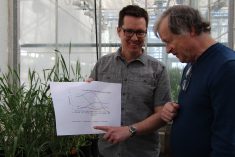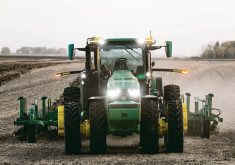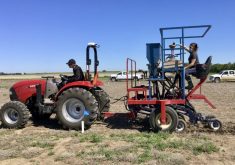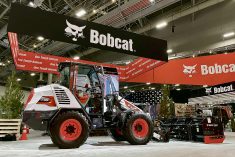Is the DOT ready for a full-time job on your operation?
It might be too early to say, but researchers know the self-propelled, driverless tractor-minus-the-tractor finishes what it starts.
“Every mission we started with DOT we were able to finish with DOT,” said Joy Agnew with Olds College.
“There was never a catastrophic failure or breakdown or issue that we couldn’t resolve to finish the mission. That was not necessarily expected with this kind of paradigm-shifting tool, so that was a really big win, in my opinion.”
Read Also
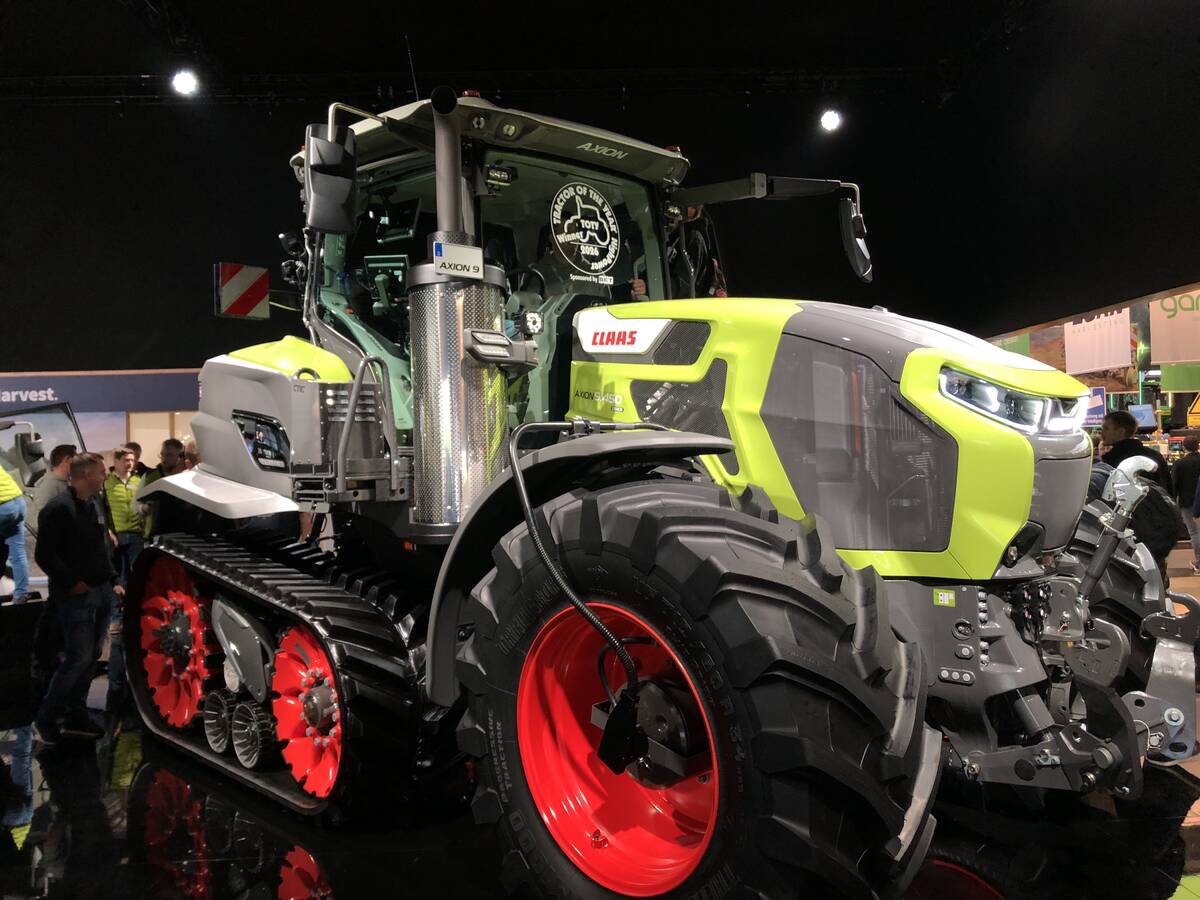
VIDEO: Claas Axion 9 tractors showcase comfort features
German equipment manufacturer Claas showcased its new Axion 9 tractor series, including farmer-focused cab features, at the Agritechnica 2025 machinery show in November.
Recently rebranded as OMNiPOWER by Raven Technologies (which bought the DOT technology in 2019) the self-propelled, hydraulically driven platform carries seeders and sprayers instead of pulling them on a route programmed by the user.
Now Olds College’s Smart Farm has some takeaways from its first year of a four-year study.
So far, the diesel-powered unit’s biggest Achilles heel appears to be fuel efficiency. When paired with a 30-foot seeding unit, the implement used more than 150 per cent more diesel than conventional seeding equipment. However, it used about the same amount of diesel per acre as conventional pull-type spraying equipment.
“A lot of variables contributed to this, including excessive idling time and transport distance to the fields,” said Agnew, the college’s associate vice-president of applied research. “We will be collecting fuel efficiency data in 2021 a bit differently to ensure we are collecting data most comparable with conventional equipment.”
Labour intensity was an issue.

Labour savings is one of the unit’s biggest selling points but the team found that it takes a lot of people to maximize the full potential of the OMNiPOWER unit. Agnew predicts both efficiency and labour requirements will go up with software upgrades and other improvements, and as users become more comfortable with the platform. Last year, 34 seeding, spraying and spreading “missions” were completed.
One of the goals was to see how long the unit could run without human intervention. On average that was 14.2 minutes for seeding and 20.2 minutes for spraying. The longest uninterrupted seeding operation was 37 minutes, while the longest period of hands-off spraying was one hour and 17 minutes.
This spring, the hands-off time for seeding increased “significantly” thanks to a manufacturer upgrade.
“Upgrades to the hydraulic cooling system greatly improved overall functionality for seeding,” said Agnew.
Traversing hilly fields did not appear to be the unit’s forte — it worked best on land with few or no obstacles. And much like any conventional farm vehicle, its operation was only as good as its operator. The unit’s abilities are based on proper preplanning and parameters such as mapping of in-field obstacles.
Although the takeaways seem to present the OMNiPOWER as something of a mixed bag, there’s a lot of room for improvement, she said.
“The efficiencies data from last year is very much baseline. It is definitely not as efficient as conventional equipment yet, but we are all confident that autonomous equipment will exceed the efficiency of conventional equipment down the road.”
The bigger picture
The college’s research on OMNiPOWER comes at a game-changing time in the field of autonomous, electric ag vehicles.
Earlier this year, Case-New Holland took a minority stake in California-based Monarch Tractor, the first fully electric, driver-optional tractor integrated in a single platform.
The tractor runs on a lithium-ion battery and features a peak power of 70 horsepower. According to the company it can run for “10-plus” continuous hours.
“The tractor is designed to assist farmers in all areas of agriculture from traditional farms, ranches and wineries,” said Donna Michaels with Monarch Tractor.
However, it doesn’t take a physics expert to understand that those stats aren’t likely going to drive large uptake by farmers pulling a heavy-duty sprayer or seeder. But proponents of electric/autonomous tractors say it’s a first step towards bigger scale, with Case-New Holland’s investment signalling confidence in the tech’s future.
The value propositions of electric vehicles are well documented, with reduced greenhouse gas emissions in the face of stronger environmental regulations possibly the most compelling. But the autonomous side is key as well, said Dawn Trautman, manager of Alberta Innovates’ Smart Agriculture and Food team — particularly when it comes to farm labour.
“We have a fairly short growing season and there’s a lot of risk associated with that,” she said. “There are all these climate factors where you might only have a short window of time to get your seeding done or to get your crop off. Having those autonomous systems in place can really help producers alleviate that strain of labour shortages and trained labour shortages.”
Safety is another factor, said Trautman.
“A lot of farm accidents are due to human error,” she said. “Sometimes farmers are working 18-, 20-hour days at seeding and harvest time so mistakes can sometimes be made. (The Monarch Tractor) has all these safety precautions built into the software and the hardware that can reduce some of those issues as well.”
Still, the arrival of autonomous electric tractors of large farms is years, possibly decades, away, she said.
“Right now the robotics and the batteries are still quite expensive so the return on investment (for larger operations) is still very much a stretch,” she said. “Monarch’s focus on these smaller operations where everything is a little more hands on is a good place to start. I would say it could be common in vineyards and orchards in five to 10 years.”
At the same time, Trautman admits that guessing timelines for technology can be a shot in the dark. She cites electric cars as an example.
“All the big companies thought that the technology was still 10 years away and then Tesla came along. Maybe there’s some startup going to come along with who knows?”
Agnew said the Monarch Tractor — or any advancement in autonomous technology — is a step in the right direction.
“At Olds College we never expected that DOT and the way DOT operates would be the only way that autonomy in agriculture was going to happen,” she said. “We were investing in the fact that autonomy is coming and we wanted to build the expertise and skills and knowledge around its overall functionality.”
As far as electric tractors are concerned, the college is already on the case.
“We’ve had a lot of great discussions, mainly within our academic group the Werklund School of Agriculture Technology, looking at the potential of electric tractors and electric autonomous tractors. We’re definitely looking at a near-term opportunity to get an electric tractor here on campus to work with as part of an applied research project or as part of the academic training we provide our students.”






